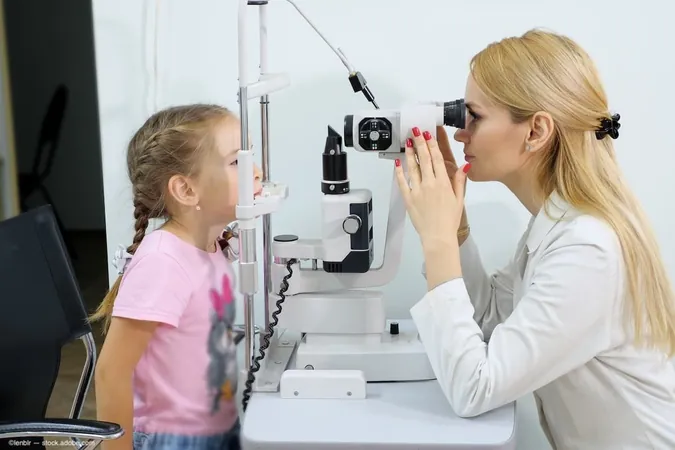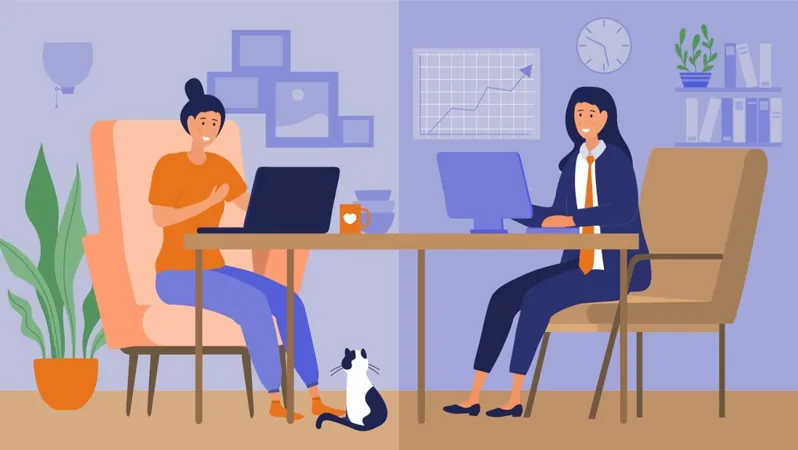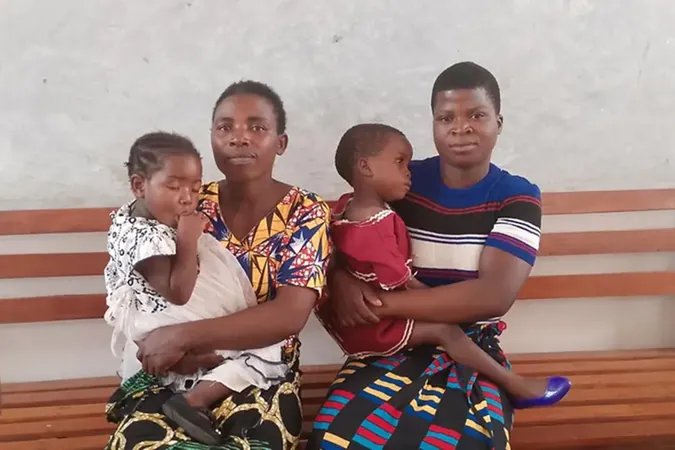
The Myopia Epidemic: Why Early Eye Screenings Are Essential for Children's Health
2024-11-28
Author: Sarah
The Global Myopia Crisis
As of 2023, more than one-third of children worldwide suffer from myopia, a condition commonly known as nearsightedness. Alarmingly, projections suggest this figure could rise to nearly 40% by the year 2050, highlighting the urgent need for effective preventive measures.
A compelling study from a team of researchers in China, published in the British Journal of Ophthalmology, reveals a troubling trend: the prevalence of myopia among children and adolescents has surged from 24% in 1990 to about 36% in 2023. This extensive analysis spanned 276 studies and included over 5 million participants from 50 countries, indicating a global epidemic of myopia that could see more than 740 million cases by 2050.
Observations from Experts
Amidst this concerning data, Dr. Daniel Cyr, a pediatric ophthalmologist at Stony Brook Medicine in New York, shares firsthand observations of a rising trend in pediatric myopia in his clinic. He emphasizes a critical point: "I am seeing younger patients becoming myopic than ever before," he notes. Such early-onset myopia marks a significant shift from what he observed during his training.
Causes of Rising Myopia
So, what is contributing to this rise in myopia? Dr. Cyr explains that myopia is influenced by a combination of genetic and environmental factors. Increased screen time, particularly among school-age children, is a significant contributor. Today's education often requires extensive use of electronic devices, and less outdoor time exacerbates the problem. "It's essential that children have a balance between near work and outdoor activities," Cyr advises.
Health Implications of Myopia
Aside from lifestyle changes, the implications of myopia can be severe. Children diagnosed with high levels of myopia face long-term health risks, including amblyopia (lazy eye) and an elevated likelihood of retinal detachment—a condition that could lead to permanent vision loss. These concerns illustrate the crucial importance of early detection and intervention.
Preventive Measures and Treatments
Ophthalmologists are now employing various methods to slow myopia progression. Treatments such as low-dose atropine eye drops and orthokeratology (specialty contact lenses that reshape the cornea) are becoming standard. Dr. Cyr recommends that parents ensure their children receive regular vision screenings and that professional help is sought at the first sign of vision problems. "Every diopter of myopia prevented can substantially reduce risks associated with further complications later in life," he explains.
The Role of Parents
Parents play a vital role in combatting myopia. By limiting screen time and promoting outdoor activities, they can significantly reduce their child's risk. Dr. Cyr has noted an increase in parental awareness regarding the importance of eye health, which bodes well for future generations. "More parents are proactive about their children’s vision health than ever before," he remarks.
Importance of School Awareness Campaigns
Moreover, awareness campaigns in schools can help ensure that regular vision screenings occur. These interventions allow for the timely referral to specialists, enabling critical early treatment. Dr. Cyr advocates for comprehensive eye exams before a child starts school to catch any potential issues early on. "If we can intervene and manage myopia early, we can steer children away from becoming highly myopic," he emphasizes.
Future of Myopia Management
With advancements in pediatric eye care on the horizon, there is hope for tackling this myopia epidemic. New research is focusing on improved formulations for treatments, such as atropine that are more stable and affordable. Additionally, innovative approaches like virtual reality treatments for amblyopia have emerged, engaging children in their care more effectively.
Conclusion
The urgent call to action is clear: all children should undergo regular eye examinations, especially those in critical age ranges. By prioritizing early screening and understanding the implications of myopia, we can help protect the vision of future generations and mitigate the looming myopia crisis.




 Brasil (PT)
Brasil (PT)
 Canada (EN)
Canada (EN)
 Chile (ES)
Chile (ES)
 España (ES)
España (ES)
 France (FR)
France (FR)
 Hong Kong (EN)
Hong Kong (EN)
 Italia (IT)
Italia (IT)
 日本 (JA)
日本 (JA)
 Magyarország (HU)
Magyarország (HU)
 Norge (NO)
Norge (NO)
 Polska (PL)
Polska (PL)
 Schweiz (DE)
Schweiz (DE)
 Singapore (EN)
Singapore (EN)
 Sverige (SV)
Sverige (SV)
 Suomi (FI)
Suomi (FI)
 Türkiye (TR)
Türkiye (TR)